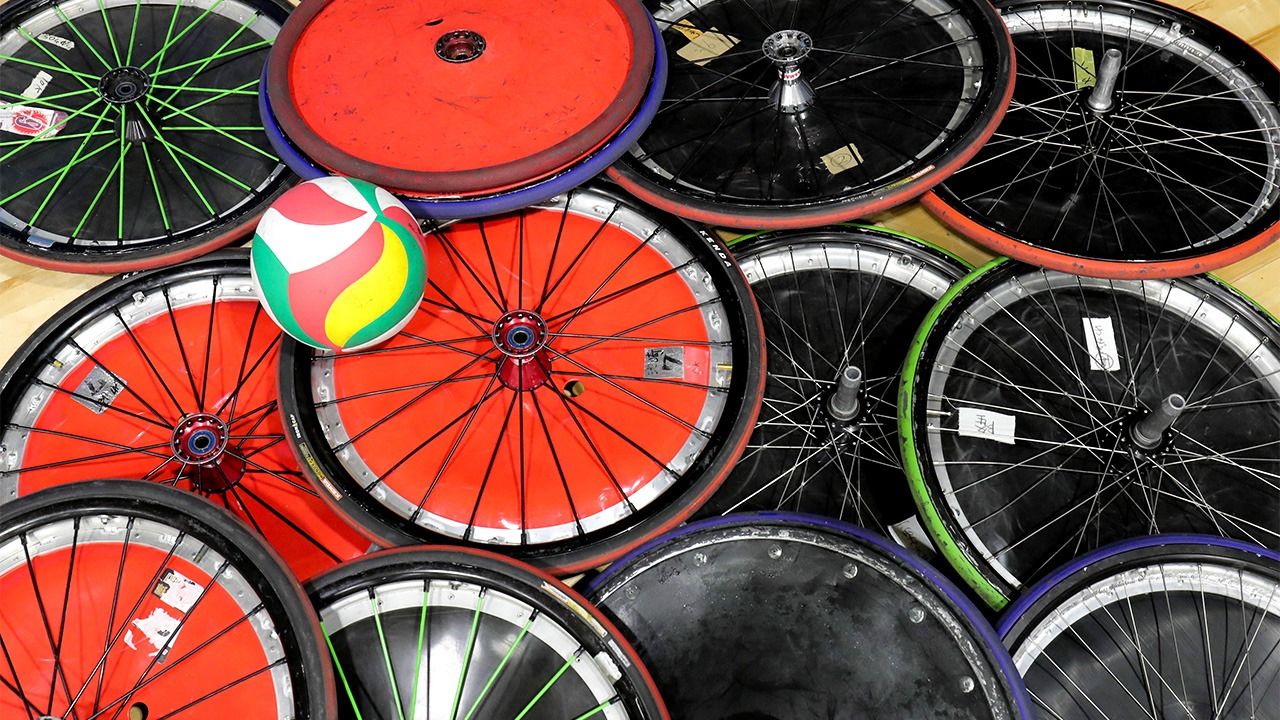
Counting Down to the 2020 Olympics and Paralympics
Tokyo 2020: Former Paralympian Says True Accessibility Still Long Way Off
Society Sports Tokyo 2020- English
- 日本語
- 简体字
- 繁體字
- Français
- Español
- العربية
- Русский
Lingering Issues
A while ago I made a dinner date in central Tokyo with a friend who is in a wheelchair and her husband. However, to my chagrin, finding a suitable restaurants was nearly impossible. Almost all the places I looked at online were in the basements of buildings, and it was difficult to tell whether there was an elevator or just a narrow flights of stairs leading down. In addition, photos showed that most places to be decidedly cramped. Discouraged by my search, I eventually gave up.
Such an experience was nothing new for my friend and her husband, though. They told me that when making a reservation at a restaurant they always call to check things like if the restroom is wheelchair accessible and if there are steps inside the shop. The couple say that booking a place to stay is also challenging. It can be hard to find an accessible room as even large hotels may have just one or two on offer, often at prices well above standard rates.
I experienced this firsthand when reserving a hotel room to interview ice sledge hockey player and three-time Paralympian Uehara Daisuke for this article. Similar to my search for a restaurant, simply finding an accessible room in Tokyo was a chore. I looked into one of the metropolis’s newer hotels, but just three of the over 150 rooms were wheelchair accessible and the price was triple the normal rate. In addition, the room I eventually reserved was at the very end of the corridor, far from the elevators.
Uehara, who gets about unassisted, knows all too well the barriers disabled people face. Like my friends, he always calls to ask if restrooms are accessible before making reservations at a restaurant. “In many cases, staff don’t even know,” he explains. Put on the spot, it is not unusual for places to simply decline his business.
Hotels are hardly any better. He tells how he once reserved a standard guest room but was offered a wheelchair-accessible room when he checked in. “It cost an extra ¥5,000,” he exclaims, “so I politely declined.” As we speak, the reason for his refusal becomes apparent. Looking at the room we are in, he notes that the towel bars in the bath are low enough for a person in a wheelchair to reach easily. “I’ve been in so-called barrier-free rooms where they were installed too high.” Turning his attention to other aspects, he points out that “the shower head is adjustable, but is set at the maximum height instead of the lowest position. Also, the remote control for the TV is on a shelf beyond my reach.” He stresses that accessibility is not merely about installing hard facilities to accommodate people with disabilities. “This room, although billed as accessible, demonstrates an all-too-common lack of attention to details.”

Uehara Daisuke was part of the Japanese ice sledge hockey team that won silver at the 2010 Vancouver Winter Paralympics. (© Imamura Takuma.)
The Tokyo Metropolitan Government expects there will be 550 wheelchair-accessible hotel rooms in the metropolis by the time the Paralympics kickoff next year. Under a metropolitan ordinance setting out barrier-free construction standards, hotels over a certain capacity built after September 2019 will be required to make doorways to all guest rooms at least 80 centimeters wide and entrances to bathrooms at least 70 centimeters wide. While Uehara lauds these efforts, he remains skeptical that rooms will truly be accessible.
Universal Design Falling Short
Japan has promoted universal design in the run-up to the 2020 Olympic Paralympic Games, but Uehara is critical of results so far and emphasizes that more progress is needed.
“Take Toyota’s Japan Taxi as an example,” he says, referring to a new model of taxi the automaker launched in October 2017 that incorporates universal design features. “The vehicles can accommodate wheelchair users, but the ramps are complicated to set up and it can take up to 20 minutes for a passenger to board. That’s ages compared to London’s famed taxicabs.”
Critics of Japan Taxi garnered some 12,000 signature for an online petition urging Toyota to make modifications. In March 2019, the car firm unveiled improvements to the taxi that included a simpler ramp design that Toyota claimed could be set up in three minutes. Several taxi companies in the capital bought the new model, and when asked about the ramp, one operator said that “deploying it takes about five minutes now, but depending on where the taxi is stopped, it can take longer.”

A passenger in Nagoya boards Toyota’s Japan Taxi on January 31, 2019, using the improved ramp. (© Jiji)
According to Uehara, other types of public transportation also have accessibility issues. “Many visitors coming for the Tokyo Olympic and Paralympic Games will want to hop on the Tōkaidō Shinkansen to visit Kyoto,” he explains. “But of the 1,300 seats on the high-speed train, only two are designated for wheelchairs users. What’s worse is that those seats are open to anyone using the reservation app and often get snapped up by able-bodied riders, forcing people in wheelchairs to spend the trip in the deck area between cars.”
He also says that new touch-screen ticket vending machines are also an issue. Not only are they are more difficult for visually impaired people to use than the earlier types that had buttons and Braille lettering, the screens are often set at an angle and are hard for wheelchair users to see.




